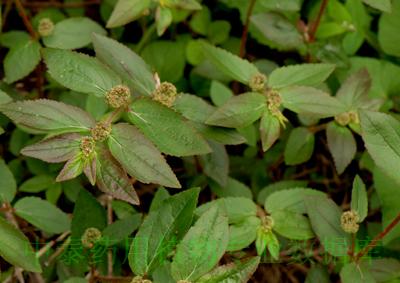| [English Name] | Garden Euphorbia Herb | |
| [Chinese Name] | 大飞扬 | |
| [Pinying Name] | Dafeiyang | |
| [Latin Name] | Euphorbiae Hirtae Herba | |
| [Genera] | Euphorbiaceae | |
| [Efficacy] | Antipyretic drug | |
| [Pictures] | Plant picture | Drug picture |

|

|
|
| [Alias] | ||
| [Source] | ||
| [Plant morphology] | ||
| [Distribution] | ||
| [Gathering and processing] | ||
| [Characteristics] | ||
| [Ecology] | It grows in stream side、ditch side、valley、open forest and bushes. | |
| [Chemical composition] | The leave contains gallic acid, quercitrin, myricitrin, 3,4-di-O-galloylquinicacid, 2,4,6-tri-O-galloyl-D-glucose, l,2,3,4,6-penta-O-galloyl-β-D-glucose, ellagic acid[1]; The stem contains friedelin, myricylalcohol, hentriacontanol, taraxerol, hentriacontane, β-amyrin [1]; The whole plant friedelin, β-amyrin, hentriacontane, β-sitosterol, taraxerol, taraxenone, spinasterol, stigmasterol, jambulol, quercetin, xanthorhamnide[1]. |
|
| [Pharmacological activities] | ||
| [Clinical trial] | ||
| [Properties] | ||
| [Medical and other Uses] | ||
| [Dosage] | ||
| [Cautions] | ||
| [Traditional usage] | ||
| [Toxicological studies] | ||
| [Pharmaceutical preparations] | ||
| [References] | ||